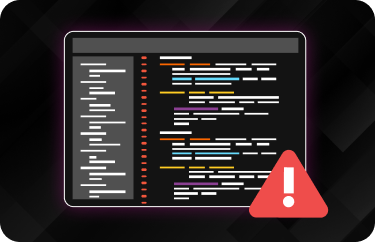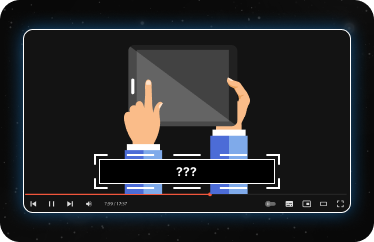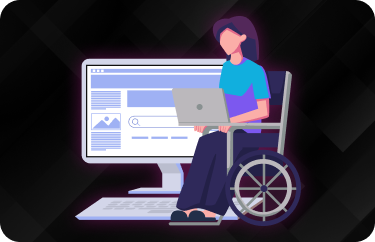It looks perfect on paper: a new office building that checks every box on the inspector's list. The ramp angle meets code. The signage uses proper contrast. The elevator buttons are labeled in Braille. Everything complies.
Then people arrive. Small flaws surface. The ramp meets code but leaves people winded. Elevator buttons sit just out of reach for someone in a wheelchair. Braille labels are correct but placed inconsistently, forcing visitors to search by touch. It's up to construction code, yet people still can't get beyond the lobby.
Web automation runs into the same problems. Scanners flag missing alt text, but can't describe what the image means. They check color contrast but can't tell if the layout is actually comfortable to read. They verify buttons exist, but not whether anyone can find or operate them. The code passes inspection, yet users still can't get beyond the homepage.
Human-led accessibility testing uncovers the usability barriers that automation can't detect. It goes beyond automated scans to confirm that websites, apps, and digital platforms are compliant on paper and usable in practice.
What is Automated Accessibility Testing?
Automated accessibility testing uses specialized tools to scan websites, apps, and digital interfaces. AI identifies issues that violate accessibility standards, such as WCAG 2.1, including missing labels, broken ARIA attributes, low contrast ratios, empty buttons, or incomplete form tags.
Common tools include:
- Axe – an open-source library used in CI/CD pipelines and browser extensions.
- WAVE – a browser-based visual analyzer that highlights accessibility errors on live pages.
- Lighthouse – built into Chrome DevTools, providing accessibility scores alongside performance metrics.
- Pa11y – a command-line tool that integrates into automated workflows.

For large teams managing multiple products, automation provides invaluable efficiency. It can run after each deployment, catch recurring mistakes, and keep accessibility visible in quick development cycles. That consistency helps teams make accessibility part of development, not a last-minute fix.
Still, speed has limits. Automated tools catch what's in the code, yet overlook what a real person experiences. They can confirm a button exists, not whether someone can reach it, understand it, or complete the task it starts. Those disadvantages show up in familiar ways. Let's look at the five most common ones developers run into.
Disadvantage #1: Automated Tools Can't Identify Poor Alt Text
Alt text connects images to meaning. It tells screen reader users what's in an image and why it matters. When written well, it turns a visual cue into something everyone can understand.
Automation can check whether an image has alt text, but not whether that description is useful. A tag like alt="logo" or alt="photo" passes a scan but adds nothing for someone using a screen reader. Some newer AI tools can now generate alt text automatically, and they're getting better at describing what's visible in an image. But they still can't tell if the description fits the context or supports what the user’s trying to do.
Developers and QA teams often run into this issue. Only a human tester can tell when a description actually matches intent. For example, "Team celebrating a product launch" paints a complete picture. "People standing in an office" falls flat. That difference is what turns accessibility from a checklist into real communication.

Disadvantage #2: Automated Tools May Report False Code Issues
Automated scanners don't understand intent. They watch for patterns and flag anything unusual, even if a page has an accessible workaround.
Purely decorative content is a good example. It can trigger missing-label warnings even if those labels only add noise for screen reader users. The same thing happens with dynamic JavaScript components. A menu that updates smoothly for users might appear broken to a scanner expecting static code.
These alerts rarely block access, but they waste valuable time. Developers tend to focus on bugs that don't impact users, while more critical accessibility issues often get overlooked. Meanwhile, manual testers know when a flagged issue matters and when the experience already works for everyone.

Disadvantage #3: Automated Tools Can't Scan Media Content
Videos, podcasts, and motion graphics bring digital products to life. They also create accessibility challenges that automated tools often miss.
A scanner can detect whether a video has a caption file, but not if captions are missing, mistimed, or incomplete. The same goes for audio descriptions. A tool may see that a track exists, yet it can't judge whether the narration accurately describes what's happening on screen.
Automation also struggles with motion and light. It can't reliably see flashing sequences or quick transitions, which can cause discomfort or even seizures for photosensitive users. A human still needs to watch, listen, and confirm the experience works for everyone.

Disadvantage #4: Automated Tools Won't Scan Content That Requires User Input
Most automated scans take a single snapshot of a page in its default state. They never click a button, submit a form, or interact with dynamic content — exactly where accessibility problems tend to hide.
Many accessibility issues appear only after a user takes action. Submitting a form might trigger a validation message. Uploading a file could open a new window. Entering text in a search field might reveal hidden results.
Without manual testing, those interactions stay invisible to a scanner. In mobile apps, this becomes an even bigger challenge. Gestures, authentication screens, and motion-based actions all require a real person to test them.

Disadvantage #5: Automated Tools Don't Account for User Experience Issues
Accessibility testing should reveal how a product feels to navigate — the clarity, flow, and focus of each interaction. Automated tools struggle there. No automated system can judge whether instructions are clear, time limits are fair, or color and motion help rather than distract.
Manual testers, especially those using assistive technologies, can reveal how real users feel when interacting with a product. They notice confusion points, overloaded layouts, and unclear guidance that no scanner could ever measure. Every product still needs that final, human check.

Manual Accessibility Testing Still Matters
Automation keeps accessibility visible and accountable. It builds good habits, scales across projects, and speeds up QA. Yet true accessibility depends on empathy — something no line of code can replicate.
Automation alone can miss the issues that most affect real users. Human testers bring that empathy into practice, turning checklists into real experiences.
That's where PLUS QA makes a difference. Our accessibility specialists test on real devices, operating systems, and assistive technologies to discover what automation can't reach. We combine automation's speed with human insight, enabling teams to move fast while knowing their products are genuinely usable.
Partner with PLUS QA to open the digital doors wider — creating experiences that welcome everyone past the homepage.
